#the big pick 2002 changed my life and i didn’t even know until 2015
Explore tagged Tumblr posts
Text
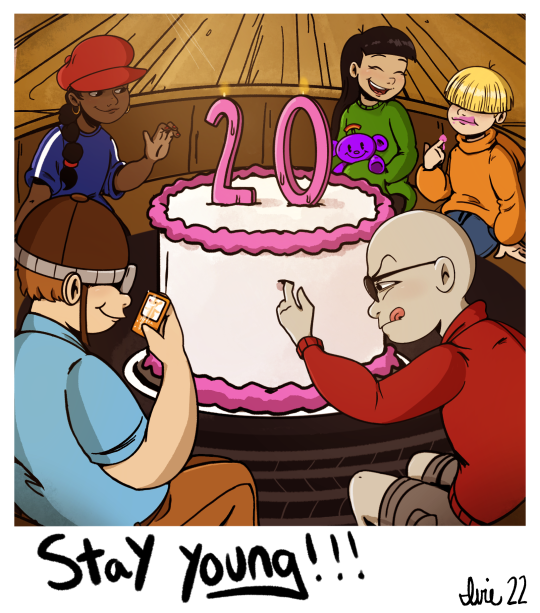
❤️💙kids next door rules💚💛
#the big pick 2002 changed my life and i didn’t even know until 2015#knd#cknd#c:knd#kids next door#codename kids next door#numbuh 1#numbuh 2#numbuh 3#numbuh 4#numbuh 5#cartoon network#sector v#my art#fanart
161 notes
·
View notes
Text
Ranking : M. Night Shyamalan (1970 - present)
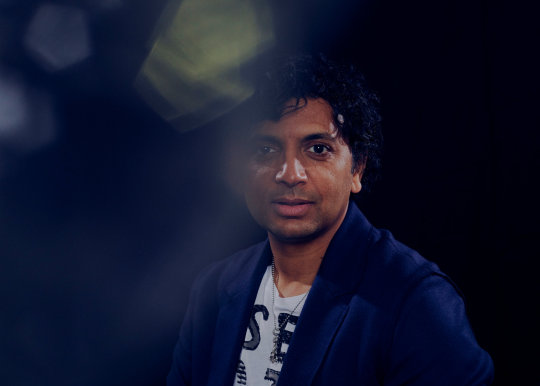
Like most people, I was introduced to Philadelphia-native M. Night Shyamalan through the massive success of his debut film The Sixth Sense. I vividly remember him being labelled “the new Hitchcock” right out the gate, which even then I felt was a lofty title to appoint to a director who hadn’t even given us a follow-up film, which can usually be taken as an indication of how much potential range one will have over their career. His skill behind the camera was evident, and his first five years of output hammered home the fact that he had a knack for writing twist endings that in itself took on a meme-worthy life of its own. Nobody is perfect, however, but unlike most directors that are suddenly met with criticism after a span as wunderkind and critical darling, Shyamalan took things in stride and did not fold, and as a result, his career has seemingly lost little to no momentum twenty years in.
Ranking the films of Shyamalan is, at heart, an exercise rich in folly, as his ambition and diversity almost calls for the films to be previously grouped into sub-genres prior to being ranked. In my opinion, however, there is enough stylistic definition and clear-cut writing panache that makes his films definitively Shyamalan, so I hope that you’ll join me as we enjoy our ride on this fool’s errand.
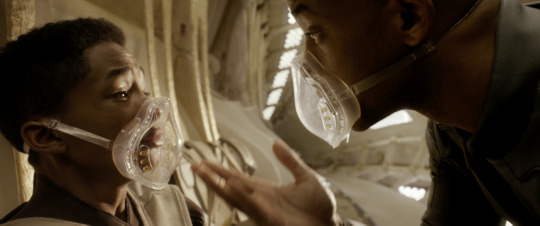
11. After Earth (2013) They say always shoot for the moon, because even if you miss, you’ll land amongst the stars. With After Earth, M. Night Shyamalan showed that sometimes you can shoot for the moon, miss it and the stars, and land somewhere in the void. Lots of post-apocalyptic flourish and setup is used for what basically equates as a side-scrolling quest, and the choices made for the characterizations are so distracting in their oddness that it’s hard to invest yourself in the movie in any capacity other than a surface level dissection of the accent and dialogue. Shyamalan does have a knack for building lore in his films, but he does way more telling than showing in After Earth. If not for the ties to Will and Jaden Smith, this film could’ve sunk the Shyamalan ship.

10. Lady in the Water (2006) I’m sure that M. Night Shyamalan had good intentions when he decided to turn a story he created for the enjoyment of his children into a feature-length film, but not every idea needs to be seen through into fruition. Many of the same issues that plague After Earth popped up in Lady in the Water, from the infinitely deep lore being smashed into exposition down to the extremely odd choices for characterizations, but unlike After Earth, at least there are recognizable aspects of the film that one can hang on to. There are a handful of surprisingly strong performances, given the ridiculousness of the content, but ultimately all other elements are shadowed by the sheer absurdity of the root narrative. I try not to pick on actors, but Bryce Dallas Howard just doesn’t do it for me in this flick.
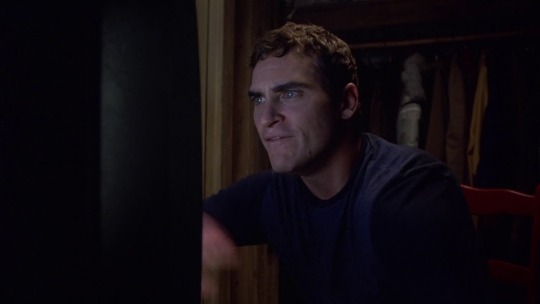
9. Signs (2002) This is probably going to be the one that causes the most feedback in terms of position. According to the masses, this film is the true masterpiece in the M. Night Shyamalan canon, but as an aficionado of alien invasion films, Shyamalan seems to zig at every point he should have zagged. Mel Gibson and Joaquin Phoenix is an interesting coupling on paper, but if there is chemistry between the two of them as the film’s leads, it didn’t translate on screen. And for God’s sake, don’t even get me started on having aliens who are harmed by water choosing to come to a planet that, from space, is CLEARLY MOSTLY WATER.
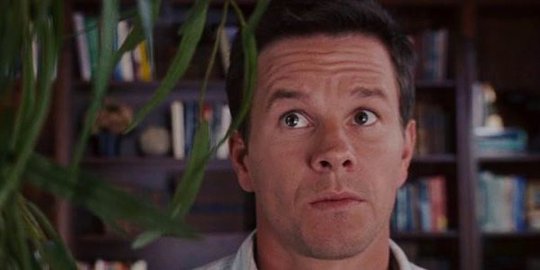
8. The Happening (2008) While M. Night Shyamalan had presented “dumb” twists prior to The Happening (we’ll get back to that shortly), the sheer vastness of the revealed enemy creates a sort of inverse danger arc in regards to the journey we were presented… while there does seem to be destruction, and a sense of danger about what will happen next (and to whom) is built up, it pales in comparison when one realizes that nature is the enemy, and if this premise were true, the events seen more than likely would not have been so random in their scale, location and severity. Maybe I’m dumping a lot of speculation into this one, but when our male lead is doing what he does in most every film, and your female lead is given an uncharacteristically underwhelming performance, you get time to think about these kinds of things.
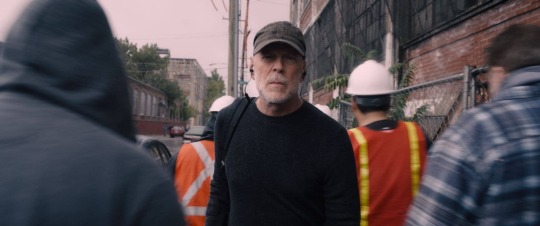
7. Glass (2019) All of the potential in the world was there for Glass to be a mind-melter. What felt like the biggest, most elaborate twist in the entire M. Night Shyamalan universe had been revealed in the form of a secret trilogy that took nearly two decades to present itself, but sadly the landing was not stuck. All of the grandness of the world built in Unbreakable and Split suddenly felt much smaller and less elaborate when our characters essentially found themselves grounded, and while we were sold the idea that all of what happened was some sort of elaborate group hallucination, the feats pulled off by Crumb are still sold to us as reality, leaving the lines blurred much more than what was likely intended. We are even teased with a storyline that feels like mockery of what could have been, but in the end, Glass was the tragic landing that undercuts the brilliance that preceded it.
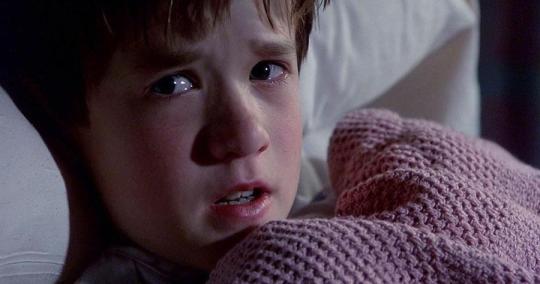
6. The Sixth Sense (1999) This film is a tough one to place, because in terms of its technical prowess and execution, it is not only a brilliant film, but a stunningly impressive debut. The problem with this film, however, is the same that tends to plague even the best magic tricks… it’s amazing until the trick is revealed. In the case of The Sixth Sense, the first watch blows you away. The second watch, as a result, feels like a completely new movie, and is even more rewarding as it resolves itself once again. Any viewing after the second one, however, is plagued by a lack of surprise, intrigue or anticipation, and what we are left with is a good movie with no wow. Perhaps the best way to watch this film, at this point, is with someone who has never seen it and has somehow managed to avoid any spoilers, as it would be the closest one can get to experiencing this film with an uninformed eye.
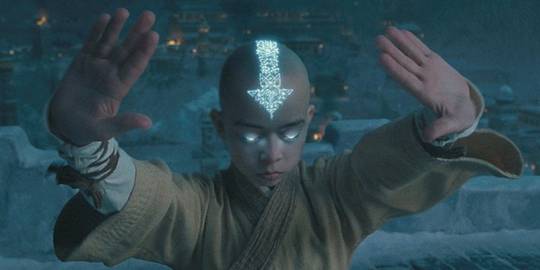
5. The Last Airbender (2010) With a black cloud hanging over this film due to overwhelmingly negative backlash from fans of the Avatar animated series, I stayed away from it like one stays away from rotten garbage. Interestingly enough, I had no dog in the fight, as I had never seen any of the source material, and only had a layman’s understanding of it as a result, with no emotional ties to anything about it. I say that to say this… I can certainly understand how an adapted work can be met with brutal skepticism and aggressive analysis, and if even one stone of fan service is left unturned then the whole thing must be cast aside, but if taken on its own merits, this is a surprisingly strong film. It hits the bullseye in terms of being an epic kid’s tale in all the ways that Lady in the Water did not, and it has the big budget feel that was missing in Glass. Who knows... my thoughts on the film may change as I finally dive into the animated series, but as it currently stands, this film should be considered as a win in the Shyamalan collection.
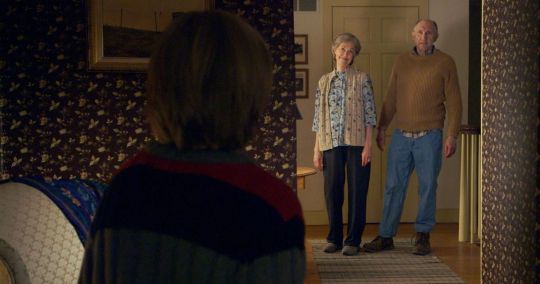
4. The Visit (2015) What a truly bonkers movie. Watching M. Night Shyamalan’s take on the found footage film is surprisingly kinetic, and thanks to some of the best casting found in any of his films, we are given characters that evoke emotion and make us either care about them or fear them. There are probably even some who would claim that they “saw the twist coming”, and maybe I’m just a sucker, but when the curtain is pulled back on what’s really going on it feels like every loose string representing a question is suddenly pulled tight enough to choke. There are just enough games present in the writing that, while we question the crazier things we see, we can also shrug them off with “acceptable” answers. If you’ve managed to go this far without anyone spoiling the ending for The Visit for you, I highly recommend checking this one out immediately, as it is that vintage Shyamalan that many people are seeking out.
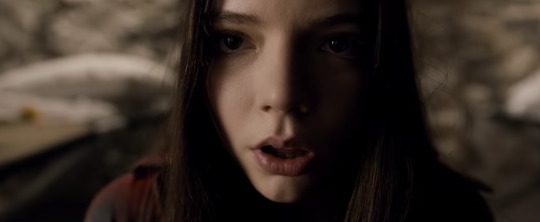
3. Split (2017) If this one were just a one-off, it would probably still sit extremely high on the list of Shyamalan films. Anya Taylor-Joy is good in most everything she does, and James McAvoy is putting on a clinic in terms of range and character variety. The film gets about as broad as it can without going over the top, and that size is translated in the tension that emerges from the captivity that Kevin Wendell Crumb puts the girls in, forcing them to his live wire and ever changing personality. With much of the film boiling down to a few locations, and a freight train of a premise that is seemingly headed in one direction, it is natural to anticipate a Shyamalan swerve, but it’s the button at the end of the film that makes you realize the sheer existence of Split in itself is the twist. For that feat alone, this film must be applauded.
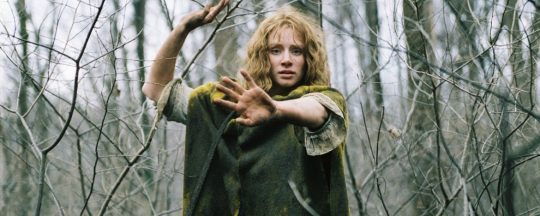
2. The Village (2004) Remember when I brought up “dumb twists” earlier? I’ll be honest with you… this was the film I had in mind, despite it being my favorite (albeit it not my top ranked). Up until the moment of truth, everything presented in this film works : as a period film it is well-executed, the use of reds and yellows is iconic, the lore presented is actually shown and not left solely to exposition dumps, and Adrian Brody brings a performance level to his character that far exceeded what was necessary. I also tend to be hard on Bryce Dallas Howard, but she steps up to the plate when the story is shifted completely to her shoulders. The twist isn’t even actually all that bad, other than the fact that it may have been the most obvious premise for a twist, but I think that even a slight tweak in regards to the overarching location or the person who discovers Howard’s character would have greatly improved the execution of the twist moment. Even though M. Night Shyamalan had already made a great movie (which is coming up in just a moment), this was the one that brought me off the fence and into the camp that supports Shyamalan.
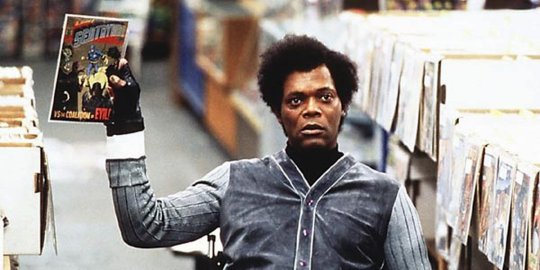
1. Unbreakable (2000) It’s quite rare in the grand scheme of things to see a director make light year jumps in his second film, especially when their first film reaches phenomenon status. Somehow and someway, however, M. Night Shyamalan did the impossible by topping a film on the Mount Rushmore of debuts with the film that feels like the most ambitious and well executed of his career. A cursory search of the Bruce Willis filmography will show that outside of the first Sin City film and Looper, M. Night Shyamalan got the last of good acting he was giving directors. The visual interpretation of the comic book world framing is so nuanced and subtle that, upon learning the context and intention of the film, each repeat viewing brings new attention to these very layered visual details. The presentation of Elijah Price was so phenomenal that it ultimately caused expectations that crushed Glass upon arrival. Even if the Eastrail 177 Trilogy didn’t quite live up to expectations, there is no denying that Unbreakable was a pitch perfect table-setter, and an impressive film to boot.
#ChiefDoomsday#DOOMonFILM#MNightShyamalan#TheSixthSense#Unbreakable#Signs#TheVillage#LadyInTheWater#TheHappening#TheLastAirbender#Devil#AfterEarth#TheVisit#Split#Glass
0 notes
Text
Michael Vick reflects on forgiveness, his football career, and what’s next

Fox Sports analyst Michael Vick spoke with SB Nation just before Christmas to discuss a little bit of everything.
Michael Vick is one of the most electrifying players the NFL has ever seen. Along with becoming one of the most popular athletes in Atlanta sports history, Vick set the standard for mobile quarterbacks during his 13-year NFL career, paving the way for guys like Lamar Jackson.
Vick is also one of the most polarizing players in NFL history. His career was put on pause in 2007 after he pled guilty for involvement in a dogfighting ring and spent 21 months in federal prison. His comeback in 2009 with the Philadelphia Eagles yielded the best season of his career, which he pursued until his retirement in 2015. He now spends most of his time as an analyst with Fox Sports on Fox NFL Kickoff (as well as other FS1 programming) and working with the Team Vick Foundation.
Vick sat down with SB Nation to discuss his career, his time in prison, forgiveness (and the lack thereof), along with what he wants to do in the future.
This interview has been edited for length and clarity.
SB NATION: Some quarterbacks ran well before you, but you were the first Michael Vick. Which players did you admire growing up, and did you ever envision becoming a player that never existed before?
MICHAEL VICK: I grew up admiring Joe Montana, Steve Young, Jerry Rice, Barry Sanders, Walter Payton, Deion Sanders, John Elway, Randall Cunningham, Warren Moon. Elite players who were all game-changers. I saw that there was room for that in the game of football. Even when I was young, when I first started attacking the field and running the football the way I did in high school, I just told myself I’d never change my style. And then I told myself when I go to the National Football League, if I made it one day, that I’d use the same style. I didn’t think that it was something different, I was just like, ‘This is the way I play. And it’s special, and it’s different, and I’m gonna use it.’
SBN: At what point did you realize, “I’m a different quarterback,” in the sense that you’re making plays that have never been made before?
MV: I think it was my second season, and we went on an eight-game run after a tough start. We went on an eight-game winning streak, and I just felt like I was the best player on the field when I stepped on the field. It’s different when you feel that way, and you know that, and you come into a game saying, ‘Nobody on the field is better than me. Even if it’s Ray Lewis out there, if it’s Charles Woodson. No offense, but I’m the best player on the field.’
SBN: And that said, Dec. 1, 2002. Vikings, in overtime, the 42-yard touchdown run. What was the huddle like before that? What do you remember about the play, and where does that rank for you among the best plays that you’ve ever made?
MV: It’s funny because that play versus the Minnesota Vikings don’t even rank among my top plays. I think it’s probably a play that I can be proud about because I didn’t pre-determine that I was going to run. They played a defense that I thought they was going to play, so I think part of being a good quarterback — a great quarterback is being one step ahead and always having a backup plan. And the backup plan just worked. I just made a great play, but an even better decision.

SBN: From your perspective, in terms of comfort and fit, what were the most significant differences in playing for Dan Reeves and Jim Mora? Do you wish you could have gotten more time with Reeves?
MV: Dan drafted me with a plan of what he would do long-term — he just never got the shot. He was fired after I made a comeback after an injury in my third season, and it was a really rough time because what he did in 2002 showed me that he was going to take advantage of my talent.
Even though it’s not what you see today, it was still him using my athleticism and my abilities. It worked for our team, and we had a somewhat average football team. I think our defense was probably better than our offense, and we was able to make the playoffs. But it was different when Jim came in and he brought his offensive coordinator that he had known in San Francisco. They introduced me to this West Coast system and it was like they was just trying to turn me into a passer. It took everything away from me. Everything I got, I had to earn. It certainly wasn’t easy because I was always in scramble mode, and always had to improv.
SBN: How frustrating was that for you? Because you had such a rare gift, and you said you felt like you were the best football player out on the field, and they’re not playing to your strengths.
MV: It wasn’t frustrating because I made it work. I was good enough to take a system, learn it, go out on a professional football field, and make it happen. We went to the NFC Championship game. I didn’t get frustrated until teams started picking up on tendencies and what we was doin’. It was just no change in direction, so everything was like, ‘This is the way it’s going to be.’
But the frustration wasn’t there because I was able to make it work. I think once I rushed for 1,000 yards in 2006, I felt like I had so much responsibility I knew I needed a change in the offense. I started to feel it myself, the coaches felt it, and I think ownership felt it as well.
SBN: That’s part of what made you great — you made things work. Now being from Newport News, getting drafted No. 1 overall by the Falcons —moving from there to Atlanta is a pretty big jump. How was the adjustment, being in Atlanta and signing a big contract, for you? What was your lifestyle?
MV: The great part was that I was raised humbly and I felt everything that I had to work for — high school, college — there was no need to change. I still like to go back home; I still like to be around my mom and my sisters and my family. Going to Atlanta, it wasn’t a culture shock — it was just more being so focused and not wanting to be a bust.
My only concern coming into the National Football League was just be the best player that you can be, earn a second contract, and prove that you’re not a bust. Any distraction that I had as far as going to a new city, a new culture, a place where hip-hop and entertainment was at its peak and pinnacle — I was just able to fall right in.
SBN: I think one of the most interesting aspects of your career that goes over a lot of people’s heads is that you peaked in Atlanta during a significant time for this city, culturally. Trap music godfathers were coming up and Atlanta was getting its respect as the place for hip-hop. What was it like being in the “Rubberband Man” video with T.I. and Usher, and how did that come about?
MV: Being in the “Rubberband Man” video was so cool, man. Me and T.I. kind of hit it off early. Ludacris, I used to run into him all the time — Usher, 2 Chainz, back when he was young, Gucci Mane, Outkast, you know — it was so fun to be out in the city and to know these guys that I respect what they do on so many levels. And here we are, together, changing the culture. I was just able to come around with the football aspect of it, and the sports demographic of it. I’ll tell you this, the hospitality from all those guys, even though most of them was from Atlanta — they welcomed me in like I was one of them.
And Atlanta will always be my second home. Those guys are all still friends to this day, and we did something great for the city at a time when times was changing.
SBN: You talked about your relationship with the city in your Players’ Tribune article, how difficult it was watching the Falcons draft Matt Ryan, including how you still follow the Falcons. How passionate are you about the Falcons and how often do you get back to Atlanta?
MV: I get back at least once a month. I still root for the guy; I still root for the fans, most important — that they get the entertainment. So it’s great to see, man. Arthur always has me around; we still play golf together. I just continue to pray that they get it together and that they keep working through trying times. You know, better days are ahead, and I hope they keep head coach Dan Quinn. I think he’s a great guy. I had a chance to meet him personally, and I really like him. It’s more about the entertainment for the city and putting on for the city. That’s what’s most important.
SBN: I think one of the most iconic pictures of your time in Atlanta that best explains how important you were in making the franchise relevant is the one of Arthur Blank pushing you in a wheelchair when you were injured in 2003. What has your relationship been like with him over the years?
MV: When people ask me about my relationship with Arthur, I always tell them it’s consistent. He’s always the same person, always full of energy, always positive, and always caring. If it was ever a more honest man that I’ve ever met in my life, it was Mr. Blank. I think every player on the Atlanta Falcons team and every person that ever worked with him could probably say the same thing if you didn’t rub him the wrong way because he can be snappy too.
So that’s what creates the respect level, and that’s why people love him, because you talk about being a true boss. He’s a true boss. He’s a guy you want to work for.
SBN: Your time here obviously came to an abrupt end when you spent 21 months in federal prison. You had your humble beginnings; you reached the top of the top. How did being in that atmosphere change you as a person?
MV: It’s scary — when you first go in, and you don’t know what to expect. Anybody who don’t come from that type of lifestyle, or never put themselves in a position where you can be sent off to prison — I couldn’t adjust, I couldn’t relate. But I did because I knew enough, and I knew people, and I knew how to handle myself. It was life-changing, because I had to get to know more about myself personally, and the everyday challenge of pushing yourself to take your mind outside of the prison.
Your goals and your ways of thinking are always more vibrant, I think, when your back is against the wall. I can’t speak for other people, but I just came out a better person. More understanding, more loyal, more trusting — I had a better understanding of life. I always knew I needed that. I always wanted to be a person who wasn’t always shying away from the big opportunities and the rooms that I could be around, and the people I could be around. I always shied away from that. I thought I didn’t need it. It’s like, man, I gotta take advantage of some of the great things that God has put into my life. I came back more of a people person and I respect that more than anything.

Photo by Jonathan Ernst/Getty Images
SBN: Was there a single moment for you where you decided you wanted to be better?
MV: Nah, every day made it tough. You know, first of all, you’re sitting in the cell and you’re asking yourself, ‘Why am I here?’ And you feel like the scum of the earth. So all you can do is aspire to do great things.
I was able to think in the short-term because I didn’t have a long way to go. I had so many people in there who supported me and pushed me to be better, pushed me every day. As crazy as it may sound, and I know it’s ironic, I always tell people I wouldn’t change that part of my life for anything because I learned so much about people, so much about myself, and it made me a better person.
SBN: What was it like to finally leave?
MV: I was happy to leave. I was so ready to leave. I was more than ready. I made notes and read a lot of books and wanted to stick to my script. And I did it — and I had a chain of events that happened in order to get back into the league and to accomplish certain things off the field, to build my family and restore my legacy on and off the field. That was more important to me than anything, more important than football because that came easy. The hard work was all the things that I had to think about and put together mentally.
SBN: There have been a lot of signatures and various petitions to keep you out of the Pro Bowl as a captain. For people who haven’t forgiven you for your involvement in dogfighting, what would you say to them?
MV: I understand the forgive-but-not-forget mentality. That’s supposed to be logical and the way we supposed to live. Just know that I’ve done everything in my power to make amends, and that’s about all I can do. And I’ll continue to do that for the rest of my life because it’s a lifetime commitment. The person I have to make happy at the end of the day is myself; only God can judge me just like he’ll judge everybody else.
So I’d say to those people just let God judge me and kind of ease on out of it. I’m finding my way in life. Allow me to find my way and everybody do them. Fight for their cause, but do it with integrity — do it without bringing down another individual or another man who has a family to feed and a lot of opportunity in life to help. We’re all human, and we all make mistakes.
SBN: Do you think it’s fair some people haven’t forgiven you and also probably never will? Do you understand where those people are coming from?
MV: No — I mean, I don’t really understand where these people are coming from. Honestly, I don’t. I don’t know them personally; I haven’t hurt anybody or any animal that’s connected to them. So that shows me that it’s just pure hatred. I can’t hate you because you’ve committed a crime — I can’t do that, you know? Now there’s a bunch of things that I don’t believe in, and there’s a bunch of things I do believe in. But when somebody breaks the law, I can’t hate them for it. I don’t know the reason why they went through that, and they don’t know the reasons why I went through what I went through. Or do they care to even entertain or research it? It’s too much; it’s too much.
SBN: Have you forgiven yourself?
MV: I forgave myself upon [the end] of my prison sentence. The entire time I was in prison, I knew why I was in there. Every day I was hurtin’ and cryin’, and my heart couldn’t take it anymore. It wasn’t until I knew that every dog was taken care of upon paying the $1 million restitution. I got clarity on that, and once I walked out of them doors and walked away, I left my life there in that prison. I left everything behind me, and I moved forward. That was the day I forgave myself. That was May 22, 2009. That was the day.
SBN: Coming out, did you expect to see success as quickly as you did? I’m sure it was difficult to try to stay in decent NFL shape in there.
MV: Yeah, I was just so hungry to get back, man. I used to always tell my wife, ‘If I could just get one more chance — I just want one more chance to start again.’ Because you don’t know if you’ll ever get another chance, I just wanted to be a starter again, and when I got it, I was just super-focused and so determined to be the best player on the field. There was nothing that was going to come between that.
SBN: Going through that first season back and your big success the following year, what was that experience like for you?
MV: I had to overcome a lot of adversity. First, getting my body back in shape and being able to test it out on a football field and knowing that the hard work over the last year and a half paid off. And then I looked at the competition I was about to face once Kevin Kolb went down. I had the chance to go up against Donovan head-to-head, and Eli Manning, Peyton Manning, head-to-head with Jay Cutler. Me and Matt Schaub, my former backup, had a chance to go back-to-back at each other on a Thursday night. All I could do was look up at the sky before the games and thank God that I was back out there. I was just watching it from prison. Real moments.
SBN: When you came back to Atlanta with the Eagles, what was that like for you?
MV: It was a tough week, man — just being the guy who was the starter in that city, and now you’re on another team and you’re not starting anymore. It just wasn’t a cool feeling because you know the reasons why. You feel sorry for the fans more than anything, the people you let down. Football will go on, but people will never forget the excitement and the things we was able to do. Now you’re on the other side, and it’s difficult. It was just a tough day for me. But I enjoyed it, and we won the game. That was even better. [laughs]

Photo by Todd Kirkland/Icon SMI/Icon Sport Media via Getty Images
SBN: I’m curious, because I have a specific player in mind, who is the one player you hated facing during your career?
MV: Warren Sapp. Regardless of who you put in front of him, right guard or left guard, he’d beat them up for four quarters. He’ll be in your ear for four quarters, and he’ll hit you for four quarters, and it’s not fun for four. [laughs] So I just played against the Bucs twice a year, and I knew the night before the game, coming into the game, I’m gonna get hit. I have to get prepared for it, and be ready for it — be a man. He made me grow up as a quarterback, too, so that was a good thing.
SBN: OK, that was my second guess, I was going to say Simeon Rice. Back in the day, it always seemed like he was causing the most issues. I remember when I was a kid, and being annoyed with the Buccaneers defense twice a year.
MV: I would say Julius Peppers before Simeon Rice. Simeon Rice was good, but Julius Peppers was hard to get away from too.
SBN: 12-year-old me hated Simeon Rice.
MV: He was good off the edge. [laughs] Big dude No. 97 on over there. He was a monster.
SBN: Speaking of a monster, I have to ask: Along with Tecmo Bowl Bo Jackson, what’s it like being the greatest video game athlete — Madden NFL 2004 Vick — of all time?
MV: [laughs] Yeah, it’s an honor man, because I idolized Bo in Tecmo Bowl. The best ever. To be labeled as one of the best video game players ever, it says a lot, man. It’s something my kids will hear, and it’ll last for a long time. It’ll be a part of my legacy forever.
SBN: When the game first came out, were you putting in work on the big screen with yourself and the Falcons?
MV: [laughs] Nah, I could never play with myself. That was one thing I couldn’t do; that was very difficult. Now, ironically, I can play with Lamar Jackson on the game and beat everybody.
SBN: I’m glad you brought up Lamar. Do you have any kind of relationship with him?
MV: Yeah, we talked coming out of college. And you know, I’ll probably want to pick up the phone and call him. If I want to get to him, I can. Lamar’s doing his thing, man, and that’s what’s most important right now. His focus is through the roof right now, and people are trying to leave him alone, they’re trying to limit all his contact. And I know what it’s about, man. I know what it’s about, we’ll catch up. But Lamar’s an amazing talent, and the NFL is blessed to have him right now.
SBN: You tweeted about him a few years ago saying he was five times better than you, which was a big deal — you’re you. But then this year happened, and he’s got a good chance to win MVP. Do you still think he’s better than you?
MV: I don’t think anybody’s better than me at the quarterback position. Now, I can say that you can do it better than me. And that’s what it is; he’s doing it better than what I did in the offenses that I was in versus the offense that he’s in. He’s doing it at a high level, man. He’s showing that he’s competent and capable, and he knows how to play the game at a high level. That’s what you want from a starting quarterback. That’s what you want your guy to look like, and build an offense around a guy like that, you’re gonna win Super Bowls.
SBN: You’ve mentioned many times that you felt you could have worked harder in your career, describing yourself as the last guy in and the first one out. Do you ever think about how much better you possibly could have been with different work ethic?
MV: Yeah, I think about how much better I could have been. But for me to be better, I would have had to become a coach on the field and call my own plays and change the offense up. You see what I’m sayin’? When you’re only doing so much, how much more can you allow to happen within the offense other than you being more vocal and more verbal and saying, ‘All right coach, I don’t like that, we need to do this.’ That’s not trusting the coach and everything he calls.
So I’m studying to make sure I understand everything that he calls. How about studying to call my own? And design my own.

Photo by Bob Levey/Getty Images
SBN: Do you want to get back into the NFL as a coach or in another capacity, perhaps?
MV: Not until my kids grow older, so I can’t do that just quite yet. Down the road, man, I’ll coach college football down the road for sure. Head coach, that’s it, get some kids ready to go to the league. Have fun with it, win some games, win a bunch of bowl games, make whatever national championship. We’ll be that good.
SBN: Now, where is a lot of your energy focused these days?
MV: Working with the Boys & Girls Club, remodeling, rebuilding Boys & Girls Clubs all across the world. That’s what our charity is doing — Team Vick Foundation — that’s what we do. We give kids things to wear and places to be, places to go hang out, places to go learn.
SBN: Lastly, I just kind of want to know how you feel about where you’re at in life right now? You had an amazing career with its ups and downs, incredible life lessons. People talk about you, whether it be good or bad. I just want to know how you feel right now.
MV: I feel great, man. I got a family that loves me dearly. I got a wife that’s amazing. I have a great relationship with the NFL, and I have an incredible job working with Fox as a sports analyst. I’m around a ton of people that care about me and appreciate me and respect me. When that’s how you live your life, and simplifying, you put your family first, and then you work as hard as you can to be the best that you can be at your profession, to fulfill all your obligations, you can sleep at the end of the night. I’m proud of myself because I’m still learning in life, still educating myself, I’m still working to be the best person that I can be. Those are things that nobody can control but me. I appreciate that because that’s like playing quarterback — gotta get it done baby. So that’s what I do.
0 notes
Text
How Jonas Wood Got His Start as an Artist
Artist Jonas Wood possesses one of contemporary painting’s most instantly recognizable aesthetics. His canvases depict plants and ceramics, often on shelves or in lush domestic interiors, rendered with a flattened perspective in vibrant hues. Yet Wood’s work is hardly formulaic. His subjects are merely vehicles for skillful, textured mark-making, which evolves year by year.
Success caught Wood (b. 1977) early. In 2006, four years after he graduated from the MFA program at the University of Washington, the Los Angeles art space Black Dragon Society gave him a solo show that launched his career. In the years since, he has participated in exhibitions from Tokyo to Dusseldorf, Los Angeles to Beirut. Through July 14th, the Dallas Museum of Art is mounting Wood’s first major solo museum presentation.

Jonas Wood, Untitled (Self Portrait), 2006. © Jonas Wood. Courtesy of the artist and Black Dragon Society.
Wood now lives in Los Angeles with his wife, fellow artist Shio Kusaka, and their two children. Before he was settled and successful, though, Wood was floundering and alone, struggling to develop the discipline and practice that have led to over a decade of fruitful making.
How did you become interested in art?

Jonas Wood, Ideal Living Room, 2006. © Jonas Wood. Courtesy of the artist and Black Dragon Society.
My parents were into art. My dad was an architect. My mom was a drama teacher. They took me and my sisters to museums. I remember visiting the MFA Boston, where I grew up. Once, I saw a Lichtenstein landscape show there. We went to New York City and I saw MoMA and the Met.
A woman named Kimmy came to our house once a week to teach art to my sister and me. My sister, Augusta Wood, who’s now a photographer, was already an amazing artist at around 12.

Jonas at his parents house, Weston, MA, circa 1997. Courtesy of Wood Kusaka Studios.
My grandfather collected art. He had this giant Francis Bacon painting that he’d bought in the ’60s, hanging above the living room piano. It didn’t mean that much to me at the time, but when I got to grad school I was like—holy shit, I grew up with a Bacon painting. My grandfather also had a blue Jackie O Warhol in his study.
I had learning disabilities and dyslexia—I got kicked out of public school in third grade because I was disruptive—but was good at puzzles and drawings. I was a maker. I think my parents pushed me to do that stuff as much as possible because it was rewarding for me. They weren’t saying, “You should be an artist,” but they thought it was good that I was making stuff.
I was in an environment where there was a lot of interesting art, but I don’t know if I was really conscious of it until later.
You got your bachelor’s degree in psychology at Hobart and William Smith Colleges in New York, then decided to get your MFA. What made you decide to pursue art?
I was just somebody who made stuff. Maybe other people’s perceptions were like, “This guy’s an artist.” But early on, it was just my hobby. I doodled, made colored pencil drawings, took undergraduate art courses. After my junior year of college, I finished my major in psychology and then reconsidered my plan: I always thought I wanted to be a doctor. Instead, I started learning to paint and get better at art. This was around 1999.

Jonas Wood, Untitled (Rosy), 2006. © Jonas Wood. Courtesy of the artist and Black Dragon Society

Jonas Wood, Untitled (M Tree), 2006. © Jonas Wood. Courtesy of the artist and Black Dragon Society.
Out of college, I started working in a psychology lab—an fMRI lab with neuroscientist Deborah Yurgelun-Todd. I administered IQ tests to study participants. At the same time, a friend let me paint out of his barn. I painted all of my family members—already, I was just mining the stuff around me for material. I made enough work that I could try to get into painting school. Still, I didn’t really see myself as an artist. It was when I got to grad school that I realized I had all this time to just do this one thing I’d been dabbling in my whole life.
Now, art is my life and my therapy, and if I don’t do it, I’m not going to feel great. It definitely has saved me in some ways.
Were any instructors particularly helpful?
This college professor, Nick Ruth, told me I needed to learn how to draw and spend more time working. That was really good advice. He also suggested I go to the University of Washington for my MFA and study with the person who’d taught him, Denzil Hurley, who shows at Canada Gallery. I applied to seven or eight schools and only got in there—which makes me think it was definitely nepotism. One person was vouching for me. If you look at my work from that time, it was so pedestrian; unrefined and underdeveloped, but I was ready to work.

Jonas Wood’s graduate school studio, 2001. University of Washington, Seattle, WA. Courtesy of Wood Kusaka Studios.
I instantly connected with Denzil’s approach. He had this idea that you should be able to make the work even if you live in the woods by yourself in a cabin, without anyone coming over to tell you what’s good. You should be able to be critical of your work and push yourself to have a painting practice. I needed to learn that because I just had raw ambition and potent surroundings. Denzil was like the painting Yoda.
I knew I was a figurative artist. Denzil told me I shouldn’t paint from life, though. So I removed this mirror (which I was using so I could paint from life) from my studio and ended up having this horrible accident. The mirror shattered and a shard of glass cut my right hand really badly. I cut a tendon and nicked this nerve bundle. It was like this weird metaphor.

Left-handed paintings. Jonas Wood, Shio with Three Eyes, 2002. © Jonas Wood. Courtesy of the artist.

Jonas Wood, Untitled, 2002. © Jonas Wood. Courtesy of the artist.
This surgeon—who worked with dock workers who had accidentally cut their fingers off—had to sew my hand back together. I couldn’t use my right hand for four months. I finished the work for my thesis show with my left hand. They were these crazy paintings with cartoonish shapes; angry paintings that wouldn’t make any sense if you saw them.
Since that time, I haven’t painted from life.
How did you land on your signature style?
When I was in grad school, I made images with letters and numbers and tried different ways to mark-make and make a line—it was all over the place. I didn’t have anything to hold onto. Then I started to develop these big, flat shapes and colors that pushed up against each other with different colors. The flatness comes from this idea that painting isn’t real; it can be whatever you want it to be.

Red Rug Still Life, 2015. Jonas Wood David Kordansky Gallery
I wasn’t giving myself enough time to mix paints before I tried to make an oil painting and move everything around and change all the colors. Everything would get muddy. It was like my brain was moving faster than my body. I couldn’t even access my ideas. Finding myself as a painter was figuring out how to change things, so that I could get a result that matched what I was thinking of in the first place.
I started sourcing images, compiling pictures that I took (of plants, for example) or cut out of magazines, or that people gave me. I’ve always been super into color. I started picking out the most potent stuff, [combining] a bunch of found images to make a hybrid space. It just kept evolving.

Red Pot with Lute Player #2, 2018. Jonas Wood Gagosian

Landscape Pot with Plant, 2017. Jonas Wood Gagosian
“How I found my style” is hard to answer. I don’t feel like I’m there yet. Even when I’m in a moment of making a lot of things, there’s still this daily practice of putting colors and shapes together and figuring out the balance, adding details, and deciding whether it’s interesting. I’ve had this strategy the whole time that I need to get better—as opposed to thinking that I’m the best. Painting practices are ever-evolving and cumulative. I’m just starting.
Did you have any mentors after graduate school?
When I first moved to Los Angeles in 2003, Matt Johnson, who shows at Blum & Poe and 303 Gallery, was like a mentor. He was the only person in the city that I knew. We went to high school together. He’s really rad. When me and my wife moved to Los Angeles, he got us jobs. I worked for Laura Owens and Shio worked for Charlie Ray.

Image of Jonas Wood’s notes. Courtesy of Wood Kusaka Studios.
Working for Laura Owens was a big part of my development. I got to see how she made her art and applied some of those things to my own work. I’d never used an overhead projector before. What’s fascinating about Laura is she made these smaller works on paper and then either projected them or used these huge pieces of paper where she would draw the shape of the painting. Her drawings were pretty automatic, but the paintings were all slowed down: She’d dissect these smaller drawings and studies, then rebuild them as paintings. That really clicked with me because I was more of an automatic drawer who needed to slow things down when I painted.
I’ve had this strategy the whole time that I need to get better—as opposed to thinking that I’m the best.
That strategy really unlocked my work and brought back some of my psychology experience, too. Not insight into a brain, but what happens in a lab. Like cooking. How do you formulate ideas and test them? It’s like a puzzle.
Laura also underpainted with a certain type of paint, and she overpainted with a different kind of paint. I ended up doing something similar—underpainting with acrylic and overpainting with oil. I saw how she organized her studio and got ready for shows and used materials. I feel very lucky that I had that job for a couple years.

Jonas Wood, Scholl Canyon, 2007. © Jonas Wood. Photo by Joshua White. Courtesy of the artist and Anton Kern Gallery, New York.

Jonas Wood, Daisuke Matsuzaka, 2007. © Jonas Wood. Photo by Joshua White. Courtesy of the artist and Anton Kern Gallery, New York.
We had a nice community in Los Angeles. Matt was just graduating from UCLA. My sister, Augusta, went to grad school out here for photography. I came to a community. Then in 2006, I had my first show, at Black Dragon Society. I met Mark Grotjahn, who bought some of the work and became a mentor and a really good friend.
I read that you met Mark Grotjahn through playing poker?
I’ve been playing poker with Matt Johnson, Jeff Poe, and Mark Grotjahn for 13 years. After I worked for Laura Owens, I worked for Matt. He was getting ready to do a show at Blum & Poe. Mark Grotjahn, Mark Richards, Bob White, Matt Johnson, and I got invited to play poker at Blum & Poe.

Jonas and Mark Grotjahn during install of their collaborative show at T&SnKreps, New York, 2009. Courtesy of Wood Kusaka Studios.
I knew who Mark Grotjahn was just from being in L.A. for three years. I had a big painting crush on him. Mark didn’t know that I was an artist. I definitely brought posters to Blum & Poe and said make sure Grotjahn gets one. He introduced me to Anton Kern and Shane Campbell, who both started showing me in 2007. Jeff Poe and Tim Blum got work from the Black Dragon show, too. It was like I instantly had an advocate.
What were the biggest obstacles when you got to L.A.?
The biggest obstacle early on was just not understanding how to put myself back together after grad school and access my power. My grad-school friend said I had a wild horse inside of me, and I needed to learn how to ride it.

In progress works in Jonas Wood’s studio. Compton, Los Angeles, 2007. Courtesy of Wood Kusaka Studios.
I was around a lot of young artists in L.A. We were just trying to be artists. Me and my wife Shio, too. We got married right after grad school in 2002, and then broke up for a year and a half, mostly just because we just hadn’t figured out how to make work. I was obsessed with that part of the struggle, trying to get traction and get people to pay attention. I remember feeling a lot of anguish. I just needed to get to that point where things started to click and it became more fun. Now I’m challenging myself, but it’s super fun. I have access to this amazing thing. This line that can describe something that you can identify as me.
How did you meet Shio? How did you end up getting back together?
Shio worked at the art library at the University of Washington, which was in the same building as the grad studios. She was an undergraduate ceramicist senior, and I was a first-year painting grad student. She’s five years older, but this was her third sort of undergraduate experience. She studied English, then accounting, and then tried out pottery when she was in Colorado, and a professor told her she should study in Seattle with Akio Takamori.

Jonas and Shio Kusaka at University of Washington, Seattle, WA, 2001. Courtesy of Wood Kusaka Studios.
I was checking out an exorbitant amount of books because I was trying to learn about art. I’d thumb through the pages and paint at the same time, trying to study and see what I liked. When I saw her at the desk, I kind of hit on her. Then we saw each other at a bar and she introduced herself. We’ve been together ever since, except for when we broke up for a year and a half.

Jonas Wood, Shio’s Still Life, 2006. © Jonas Wood. Courtesy of the artist and Black Dragon Society.

Frimkess Chilean Landscape Pot, 2015. Jonas Wood Gagosian
We never got a divorce. We got back together right before my show in 2006. We’d been seeing each other 8 months or 10 months after we broke up; being together, but not really being together. Then we moved into a house together. I guess it was mostly about getting to a place where I could handle somebody else. Selfishly, I guess we both needed our own time to get there.
If we hadn’t broken up early on, we never would have made it. Obviously, it worked out because we have two kids. Since we got back together in 2006, we’ve shared studio space. We figured it out.
Did you ever feel any sense of rejection early on?
Oh, yeah. When I first moved to L.A., I set up a studio visit with some gallery and they never showed up. I felt like I was ready to show right when I got to L.A., and it wasn’t happening. It was for the best—it would have been a fucking disaster if I showed right off the bat.
What would you consider your breakthrough moment?

Jonas Wood, Make It Talk, Teodoro, 2006. © Jonas Wood. Courtesy of the artist and Black Dragon Society.
There were a few paintings right after grad school where I started to put it together. But I think I really started to feel secure after my 2006 Black Dragon show. I had my first real stage, and people were paying attention. I didn’t need a job after that. It’s like if you’re in a band and you can go on tour instead of working at the bar.
I was just so happy to have a show in the town where I was living. People were going to see it. It’s every young artist’s dream, right?
from Artsy News
0 notes
Photo

kasper wiley || 22 || tech support/hacker || sunset marina
he wasn’t really sure why he was hanging out with these people, he didn’t really know them but he had been drinking and they had more drinks and a warm fire, and he liked warmth and booze plus the men were shirtless and hot and cane wasn’t around to entertain him with his sexiness so he had to make due okay. so when he grabbed another hard lemonade the pretty red headed girl asked him how he ended up on the beach and he grinned and stood up.
“it all started when one heather mooney met a man named ---” he was rudely interrupted by one of the dudes when they cut him off to try and explain she only meant like what he was doing on the beach, so he put his finger to the guy’s lips and said “shhhhh, i am getting to that but to get to one’s present one must start from the beginning. that’s from a fortune cookie, so you know it’s legit.” he cleared his throat and began again.
“it all started when heather mooney met a man with the unfortunate name of wyatt wiley, they had what was most likely very disappointing sex considering they were both only sixteen, but out of that very disappointing evening came me. i was born on march 9th, 1995. i was a healthy baby, and very smart, my mom says so all the time thank you very much. anyway daddy dearest really only stuck around long enough to give me his name and then bounced to go to college, leaving my mom to pick up the slack and raise a little boy all by her lonesome… or well with her, my grandparents, my 2 aunts, four cousins and our three dogs.” he said taking another sip of his drink and looking around the fire. “if i could sing i’d win american idol just on that sob story alone.”
he took one more sip before continuing “nothing of importance really happened when i was a kid, i grew up on the outskirts of dallas, as you can probably tell from my accent, and my ability to handle alcohol. also you should see me ride a di---- horse.” he moved a little closer and tossed another log on the fire “anyway nothing really important happened until i was seven, it was christmas of 2002 and the only gift i got that year was a computer. it was a mac, and not one of the skinny ones now, the thing was thick but i loved it. i had always been interested in computers but only got to play with them in school, the teacher told my mom i was a natural and could do something with computers one day.”
his drink was finished now so he grabbed another one, popping the cap and taking a swig. “over the next few years, a two computers later, i was miles ahead kids my own age when it came to those things, while they could barely work excel i was designing my own little codes and already hacking into games to cheat and stuff. i had even began to build my own stuff by that point. i was thirteen, so this was 2008, when i had actually put all my families files online and taught them all how to use a computer, it was also the age i began to make some money by helping the old people in the neighborhood with their stuff, i was basically neighborhood tech support. and it was the first time i actually realized i could do something with it to make a living.”
“and make money i did, over the next three years i had developed a program to help hack into teacher’s grade books and change grades, as well as began to make fake ids and things like that. it was lucrative really, kids would pay good money for that stuff and i had no issues helping them out.” he smirked, they were transfixed now, for some weird reason, wrapped up in getting to know about a complete stranger. “but right before my seventeenth birthday, in april of 2012 i believe it was, i got caught and expelled from school. luckily the judge went easy on me and i was just forced to do community service at a retirement home, in tech support obviously. i lucked out with no jail time, but it ruined my college hopes and instead i got my g.e.d and got a job at best buy with the geek squad.”
he sat back down on one of the logs and looked at the redhead who was looking at him with a little bit of sadness. “hey don’t worry patty ann, one door closes and like another opens right? cause it was around the time with the geek squad i also began to hack a lot more, which eventually led me to the love of my life hurricane, or cane as i prefer to call him.” he grinned thinking of his boyfriend, with the pretty blonde hair and gorgeous body who puts up with his bullshit on a daily basis. “apparently he had been following my hacking and asked me to help him with a job, he was willing to pay and well i like money, so i agreed, this was august 14 2015, i remember the exact date because it was the day i first laid eyes on him and i’m pretty sure i had a sex fantasy right then and there too.” he said with a laugh “so i helped him hit a few atms to help fund a job he was planning, but that wasn’t as important as the crazy good sex we started to have and i guess it was also when we became a thing, at least that’s when i start the count.”
maybe it was weird to be telling people he had just met all this stuff, but he knew after this next part they would think the majority of it was complete bullshit so he wasn’t scared. “soon he was ready for the big job, stealing from emilia conner, businesswoman, political fundraiser, trump supporting bitch. seriously google her, she shady. so early 2016 we began to recruit a team to help pull it off and spent the next few months planning and learning her routine. then on october 31, 2016, at her halloween party we pulled off one of the biggest heists known to man, but she never reported it because the money we stole was all money she made from the black market, backdoor business deals, and other illegal activities. so we split the money, cane and i moved here, bought a cute little house a few months back. i went out drinking tonight, kept playing call me maybe on the jukebox so got kicked out and then ran into you guys, so alas here i am and that’s how i got here.”
he bowed at his sit after his story as the group started cracking up and the girls looked amused but slightly annoyed, telling him that was a long bullshit story to get to him being kicked out of a bar. he just shrugged and smiled “thanks for the drinks guys, i’m going to head home.” he gave them a ten to cover what he drank and when he got home he cuddled up next to hurricane kissing his shoulder “you’re wrong you know, it never gets old seeing people’s faces when i tell them my story.”
#eswrp challenge#eswrp#no one is going to read this novel#i had a lot of fun writing it though#pretty sure it's not what the admins are looking for at all lolol#but i'm proud of it#i should get a life tbh#this is what happens when you have a ton of muse and time to kill
2 notes
·
View notes
Text
Dean O'Gorman: Remaking Goodbye Pork Pie, why LA is over-rated and turning 40
8:30 PM Saturday Jan 14, 2017
SC:http://www.nzherald.co.nz/entertainment/news/article.cfm?c_id=1501119&objectid=11780520
Actor Dean O’Gorman is in a new movie but more importantly, as he tells Greg Bruce, he’s in a good place.
He looks so boyish and was rendered basically immortal by playing a central role in The Hobbit films but Dean O'Gorman married last year and turned 40 last month and now he has to face up to the realities of middle age.
So it's probably appropriate that in Pork Pie, the upcoming remake of the legendary New Zealand film of basically the same name from 1981, he plays Jon, a middle-aged dude who refuses to age: you're boyish until you aren't.
An actor's life, maybe more than any other, is about finding yourself, and that's something O'Gorman has had to do many times, growing up on screen, in real life and, briefly, as a 30-year-old working at Photo Warehouse.
The new Pork Pie is not a great movie but it's a likeable movie, and the main reason for that is O'Gorman and the ease with which he occupies his misguided middle-aged idiot character Jon.
He says he wanted to play a version of a New Zealand man he understood - not a black singlet-wearing, No. 8-wire type of guy, but a creative person living a life of great uncertainty. It is, he says, the sort of artistic person he's been surrounded by most of his life.
"A lot of these people get lost and they struggle because it can be very inconsistent and it's very vulnerable because you're putting projects out there all the time and everyone feels they have an opinion on acting - people will tell me what they think about my acting and I don't even f---ing know them."
His first acting role came as a 13-year-old, in the appallingly named genre known as "kidult", with a six-part drama called Raiders of the South Seas, which also starred a young Martin Henderson.
O'Gorman worked as an actor consistently through his teens and early 20s, including substantial spells on Shortland Street, Hercules, Young Hercules and Xena. Then, in 2002, he starred in a New Zealand movie called Toy Love, a highly touted film that was slated by critics.
"I'm not saying it was a perfect film," he says, "but I really enjoyed it and I just felt a bit hurt by that."
No longer feeling inspired by what he was doing here, he moved to Australia, got some odd jobs, did a year long spell on McLeod's Daughters, then moved to America.
He spent a few years there, determined to make it, but he didn't. Just before his 30th birthday, he was cast in a pilot, but says that instead of feeling excited, he just felt homesick. He came home for his birthday and when he went back to Los Angeles, he knew he'd had enough.
"I had this idea that I couldn't go home until I'd achieved something overseas but then I got so homesick, I thought, 'F--- that', and I came home and it was like the greatest decision."
He moved into a place in Ponsonby and became a frequenter of Grey Lynn's photographic retail specialists Photo Warehouse.
"I would go there and buy photographic stuff, so I knew the people and I said, 'Can I work here?' They said sure, and I was terrible at it."
"I was always like 'I don't think I'll be here long because I'll either get fired or give up', you know, but I just think it's good to have that diversity."
He left Photo Warehouse after he was cast to play a god on New Zealand television series The Almighty Johnsons, and then he was in New Zealand telemovie Tangiwai, then he got a major role in The Hobbit.
"I just kept thinking, 'When this job finishes, I should go back to the Photo Warehouse'," he says, but he never has.
He has a sort of side career in photography, having exhibited both here and internationally, including at Frankfurt's B3 Biennale in 2015 and the first result after his Wikipedia entry when you google him is his photography website, which includes many striking portraits of his actor friends.
Asked how he's changed as an actor over the years, O'Gorman says, "I probably give some less f---s."
It's a surprising comment because he has had some international success in the last few years, not just in The Hobbit but also playing Kirk Douglas in the critically lauded 2015 Hollywood movie Trumbo, alongside big names like Helen Mirren, Bryan Cranston and Louis C.K. It's possible to argue that he should be giving an exponentially increasing number of f---s.
"I think you need to enjoy your life," he says, "and I spent probably a lot of my mid-20s not really enjoying the projects, or struggling hard to do a job and I think I've learned to do a job because I want to do it and not necessarily look as much at the peripheral, 'What will this do for my career? Where will it take me?'"
I ask O'Gorman what a typical day now looks like for him. "Oh, God," he says, "it's pretty relaxed in a way. You get auditions and you have to prepare for that but it's a town full of actors so everyone just sits around and drinks coffee."
Realising he thought I was asking about Los Angeles, where he no longer lives, but usually spends at least a couple of months a year, I say, "Sorry, I meant here."
"Same thing!" he says. "A typical day is pretty much that, meeting up with some friends or, because we live a bit further out I tend to stay home and work on my own projects a bit more or just relax. The greatest time for me is knowing there's a job coming up and so that is, say two months before that job, I'm not unemployed, I'm on holiday, so I can do whatever."
"I guess at some point when does it tip over from being downtime to being unemployed? I guess there's some boundary."
In Pork Pie, O'Gorman's character ends up riding the length of New Zealand in a car stolen by a character played by James Rolleston. The pair are an odd couple who become buddies, and they pick up a young woman along the way, in what is a fairly faithful replica of the events of the original.
In many ways, the gang is going nowhere, directionless, but in another way, the direction is unimportant. What matters is the journey.
O'Gorman says he wants to be remembered not for being a good actor but for being a good person.
"I really like it when people enjoy jobs that I've also enjoyed making," he says, "but I think on your deathbed you want your mates around you, not people who might have seen a job you did once and liked it."
He says that a good person, as he conceives it, is not the same things as being nice, but is more about trying "not to spread any more hate, which is quite rife at the moment, isn't it?"
A couple of minutes later though, he had second thoughts.
"I think what I was trying to say was that I don't feel pressure to be a good samaritan; just knowing what's important. So work is important but family is important and finding the balance between the two. When I was younger, I didn't have as much of that balance and it can be quite empty."
Asked if there was a moment where he came to that realisation, he says: "Yeah - when I came back to New Zealand and I didn't have any work or immediate projects I could use to bolster my appearance of success. I wasn't, like, name-dropping that I was at the Photo Warehouse."
Last January, he married his long-term girlfriend, makeup artist Sarah Wilson: "I felt different when I proposed," he says. "I just felt different. I don't know why. I Just felt very grounded and very, I don't know, I just felt like a man."
Pork Pie is, on some level, the story of O'Gorman's character battling to grow up, or maybe battling against it, but then what is life but an eternal struggle to grow up, and to find a place in this ever-changing world?
"I read this interview, with Alan Rickman I think," O'Gorman says. "He said he spent his whole life trying to work out how to act and then when he figured it out, he didn't want to do it anymore."
I ask O'Gorman if he identifies with that.
"I don't know," he says. "I'm not at that point."
4 notes
·
View notes
Text
Garden Trends for 2019
“Great things are not accomplished by those who yield to trends, fads, and popular opinion.” Jack Kerouac
I’ll never forget how excited my Mother was to play “Vanna” alongside Pat Sajak on the TV hit, Wheel of Fortune. It was the first time in the thirty plus years of the show that anyone stepped into Vanna's beautiful shoes to wave bye-bye, and at 87 years young, my Mom definitely had a reason to gloat. Mom never owned a computer nor even knew what social media was, but a few days after her historic TV appearance, she called me to say that everyone said she was "trending." She didn't have a clue what trending meant, but she knew it must be something fun, fabulous, and futuristic.
So what does “trend” actually mean? Every dictionary claims a varied description but in general a trend means a change in direction, an upward drift, a tendency to move in a certain direction. I’ve never been a person who embraced trends as I believe in being original. I like to connect and having meaning in my surroundings. I prefer style. A style is classic, enduring, and lasting. Nevertheless, no matter what your personal design preference is, understanding trends can help you identify what you may be missing or what you need to pay attention to. After you know what is trending, it’s up to you to express your true individuality.
Trends are what drive sales and help consumers identify new products and services on the market. For over twenty years, the Garden Media Group has had its fingers on the pulse of a gardening nation. In 2001, outdoor spaces as living rooms were the big hit. 2002 was the year of container gardening. By 2006, we had recognized the importance of growing our own food and being sustainable. The birds and bees highlighted our efforts in 2008, and because of the drought, 2011 became the year of succulents. Finally in 2015, Millennials were recognized as becoming the next major gardening group, and by 2018 the focus was on wellness.
So what is the chief theme of 2019? No surprise, it is Me to SHE. With the “#Me Too” movement launched, in gardening we are looking to the SHE, as in Mother Nature, to lead us to the light. Temperatures are rising, major disasters are a regular occurrence, and species are dying. We need to save our planet and being a gardener is one of the first lines of defense. Gardening connects us to nature as we birth the "new environmentalism". Through horticulture, we can assist with solving climate change and biodiversity loss. By finding joy in nature, we have the opportunity to save the environment. When we save our world, we save our species.
How is this a positive upward trend for 2019? Here are a few statistics from 2018: • $47.8 billion was spent on gardening including plants and patio furniture. • $503 is the average amount spent per U. S. household on garden supplies. This is $100 more than last year. • 29% of all gardeners are now in the age range of 18-24 years of age, setting record highs. According to GardenResearch.com, Millennials were responsible for 31% of houseplant sales! • More than two million jobs have been created through horticulture.
For humans to survive, our earth must thrive. Growing plants both inside and outside are proactive actions that anyone and everyone can include into daily life.
An indoor generation has been identified whereby 90% of people worldwide spend 22 hours a day inside without going outside for fresh air. Research indicates that Americans spend 93% of their time indoors or in their vehicles and children are outside for less than one hour per day. Earlier generations of children spent 50% of their time outdoors. As a species, we have migrated from the farms to the screens. Obesity, mental illness, high cholesterol, depression, anxiety are the results of too much technology where we are plugged in and tuned out to the benefits of fresh air, digging in the dirt, and natural environs.
So what can we do to help ourselves be healthier in 2019 if we have to be indoors fixated on our screens? Install a terrarium, buy a bromeliad, or better yet, take a 15-minute break to walk in a nearby park. Eat lunch on a bench outside. Enjoy a forest bath. Improve your indoor air quality with a peace lily positioned in a corner of your office, add a pot of herbs to a windowsill, fall in love with tropical plants that will flourish indoors with little care.
By spending too much time in front of televisions, playing video games, texting, being on our phones or tablets, checking social media, or surfing the web, we are disregarding our natural state while increasing our physical and mental challenges. When we take care of ourselves by indulging in nature, we will refresh and reboot our world. Mother Nature is always in charge and we can’t ignore her warning signs.
In the next issue, I’ll continue this discussion on Garden Trends for 2019. Understand what is trending, then start your own. Until then, consider a digital detox. Get up, get out, dig a little, and breathe our clean air.
Wishing you a fresh start and a new leaf for 2019. Happy, happy New Year!
Cynthia Brian’s Gardening Guide for January
FREE seed catalog and FREE shipping on over 500 seed varieties at Sow True Seed through January 15. Use Code SHIPFREE19 at https://sowtrueseed.com/FILL a nature RX, even in the cold weather, and go outside for at least 15 minutes a day. The benefits include relaxation, better sleep, fresh air, physical activity, and stress reduction. START a gratitude habit for the New Year. It’s the season to be thankful and if you start now being appreciative for the small things in life, you can turn this feeling into a year-round practice, bringing you more joy. PICK UP for your holiday tree is available through January 18, 2019, on your regular collection day. Remove lights, ornaments, tinsel, and trimmings. Unfortunately flocked trees are not included in the collection. Schedule a pick-up for a fee. Call 925-685-4711. BOOST your vitamin C with fresh from citrus trees. Ripening for the next two months you will enjoy sweet navel orange, lime, lemon, grapefruit, and Clementine. HARVEST your Hachiya and Fuyu persimmons that are still hanging. SHARPEN pruning shears in preparation for the heavy rose pruning you’ll do towards the end of January. In the meantime, allow the rosehips to flourish as food for the birds. PREPARE for winter. A wife’s tale from the old country states that when the berries are full, the winter will be long. Cotoneaster, holly, and pyracantha berries are feeding the birds. IDENTIFY mushrooms before consuming. Many are toxic.
Happy Gardening. Happy Growing.
Read more: https://www.lamorindaweekly.com/archive/issue1222/Digging-Deep-with-Cynthia-Brian-Garden-Trends-for-2019-PART-1.html
Cynthia Brian
Cynthia Brian, The Goddess Gardener, raised in the vineyards of Napa County, is a New York Times best-selling author, actor, radio personality, speaker, media and writing coach as well as the Founder and Executive Director of Be the Star You Are1® 501 c3. Tune into Cynthia’s Radio show and order her books at www.StarStyleRadio.com
. Buy a copy of her new books, Growing with the Goddess Gardener and Be the Star You Are! Millennials to Boomers at www.cynthiabrian.com/online-store.
Hire Cynthia for projects, consults, and lectures. [email protected] www.GoddessGardener.com
Donate to Fire Disaster Relief via Be the Star You Are!® 501 c3 at www.BethestarYouAre.org
0 notes
Text
Garden Trends for 2019
“Great things are not accomplished by those who yield to trends, fads, and popular opinion.” Jack Kerouac
I’ll never forget how excited my Mother was to play “Vanna” alongside Pat Sajak on the TV hit, Wheel of Fortune. It was the first time in the thirty plus years of the show that anyone stepped into Vanna's beautiful shoes to wave bye-bye, and at 87 years young, my Mom definitely had a reason to gloat. Mom never owned a computer nor even knew what social media was, but a few days after her historic TV appearance, she called me to say that everyone said she was "trending." She didn't have a clue what trending meant, but she knew it must be something fun, fabulous, and futuristic.
So what does “trend” actually mean? Every dictionary claims a varied description but in general a trend means a change in direction, an upward drift, a tendency to move in a certain direction. I’ve never been a person who embraced trends as I believe in being original. I like to connect and having meaning in my surroundings. I prefer style. A style is classic, enduring, and lasting. Nevertheless, no matter what your personal design preference is, understanding trends can help you identify what you may be missing or what you need to pay attention to. After you know what is trending, it’s up to you to express your true individuality.
Trends are what drive sales and help consumers identify new products and services on the market. For over twenty years, the Garden Media Group has had its fingers on the pulse of a gardening nation. In 2001, outdoor spaces as living rooms were the big hit. 2002 was the year of container gardening. By 2006, we had recognized the importance of growing our own food and being sustainable. The birds and bees highlighted our efforts in 2008, and because of the drought, 2011 became the year of succulents. Finally in 2015, Millennials were recognized as becoming the next major gardening group, and by 2018 the focus was on wellness.
So what is the chief theme of 2019? No surprise, it is Me to SHE. With the “#Me Too” movement launched, in gardening we are looking to the SHE, as in Mother Nature, to lead us to the light. Temperatures are rising, major disasters are a regular occurrence, and species are dying. We need to save our planet and being a gardener is one of the first lines of defense. Gardening connects us to nature as we birth the "new environmentalism". Through horticulture, we can assist with solving climate change and biodiversity loss. By finding joy in nature, we have the opportunity to save the environment. When we save our world, we save our species.
How is this a positive upward trend for 2019? Here are a few statistics from 2018: • $47.8 billion was spent on gardening including plants and patio furniture. • $503 is the average amount spent per U. S. household on garden supplies. This is $100 more than last year. • 29% of all gardeners are now in the age range of 18-24 years of age, setting record highs. According to GardenResearch.com, Millennials were responsible for 31% of houseplant sales! • More than two million jobs have been created through horticulture.
For humans to survive, our earth must thrive. Growing plants both inside and outside are proactive actions that anyone and everyone can include into daily life.
An indoor generation has been identified whereby 90% of people worldwide spend 22 hours a day inside without going outside for fresh air. Research indicates that Americans spend 93% of their time indoors or in their vehicles and children are outside for less than one hour per day. Earlier generations of children spent 50% of their time outdoors. As a species, we have migrated from the farms to the screens. Obesity, mental illness, high cholesterol, depression, anxiety are the results of too much technology where we are plugged in and tuned out to the benefits of fresh air, digging in the dirt, and natural environs.
So what can we do to help ourselves be healthier in 2019 if we have to be indoors fixated on our screens? Install a terrarium, buy a bromeliad, or better yet, take a 15-minute break to walk in a nearby park. Eat lunch on a bench outside. Enjoy a forest bath. Improve your indoor air quality with a peace lily positioned in a corner of your office, add a pot of herbs to a windowsill, fall in love with tropical plants that will flourish indoors with little care.
By spending too much time in front of televisions, playing video games, texting, being on our phones or tablets, checking social media, or surfing the web, we are disregarding our natural state while increasing our physical and mental challenges. When we take care of ourselves by indulging in nature, we will refresh and reboot our world. Mother Nature is always in charge and we can’t ignore her warning signs.
In the next issue, I’ll continue this discussion on Garden Trends for 2019. Understand what is trending, then start your own. Until then, consider a digital detox. Get up, get out, dig a little, and breathe our clean air.
Wishing you a fresh start and a new leaf for 2019. Happy, happy New Year!
Cynthia Brian’s Gardening Guide for January
FREE seed catalog and FREE shipping on over 500 seed varieties at Sow True Seed through January 15. Use Code SHIPFREE19 at https://sowtrueseed.com/FILL a nature RX, even in the cold weather, and go outside for at least 15 minutes a day. The benefits include relaxation, better sleep, fresh air, physical activity, and stress reduction. START a gratitude habit for the New Year. It’s the season to be thankful and if you start now being appreciative for the small things in life, you can turn this feeling into a year-round practice, bringing you more joy. PICK UP for your holiday tree is available through January 18, 2019, on your regular collection day. Remove lights, ornaments, tinsel, and trimmings. Unfortunately flocked trees are not included in the collection. Schedule a pick-up for a fee. Call 925-685-4711. BOOST your vitamin C with fresh from citrus trees. Ripening for the next two months you will enjoy sweet navel orange, lime, lemon, grapefruit, and Clementine. HARVEST your Hachiya and Fuyu persimmons that are still hanging. SHARPEN pruning shears in preparation for the heavy rose pruning you’ll do towards the end of January. In the meantime, allow the rosehips to flourish as food for the birds. PREPARE for winter. A wife’s tale from the old country states that when the berries are full, the winter will be long. Cotoneaster, holly, and pyracantha berries are feeding the birds. IDENTIFY mushrooms before consuming. Many are toxic.
Happy Gardening. Happy Growing.
Read more: https://www.lamorindaweekly.com/archive/issue1222/Digging-Deep-with-Cynthia-Brian-Garden-Trends-for-2019-PART-1.html
Cynthia Brian
Cynthia Brian, The Goddess Gardener, raised in the vineyards of Napa County, is a New York Times best-selling author, actor, radio personality, speaker, media and writing coach as well as the Founder and Executive Director of Be the Star You Are1® 501 c3. Tune into Cynthia’s Radio show and order her books at www.StarStyleRadio.com
. Buy a copy of her new books, Growing with the Goddess Gardener and Be the Star You Are! Millennials to Boomers at www.cynthiabrian.com/online-store.
Hire Cynthia for projects, consults, and lectures. [email protected] www.GoddessGardener.com
Donate to Fire Disaster Relief via Be the Star You Are!® 501 c3 at www.BethestarYouAre.org
0 notes
Text
Profile assignment
“Beauty In The Struggle”
The irony of having one of the greatest moments happen in his life to the worst feeling in life reign in at the same time to balance his highs and lows. His business sky rocketed into 6 million revenues from 300,000 meals in a year. In about a month over 5,700 reservations were made, that was more than any other independent restaurant in the country. After seeing his rent increase 5 times larger he walked in, when it was empty and he began to tear. He did not see none of this coming. He drank his red bull to ease the pain, but then picked it up and slammed the can on the table and thought, “what the fuck have I gotten myself into!?”
(photo from Facebook)
In cold Downtown Minneapolis is where it all started for Steve Meyer and Mitch Omer. With a snarl on his face and a hammer in his fist, Omer stood in the middle of filthy walls and squeaky floors knowing he had to build his place from the ground up. He stood up as his head nearly hit the celling. He was caught off balance by his shattered knee from a motorcycle accident and high off of narcotics that drowned his brain to numb the pain. According to About Hells Kitchen in Minneapolis article, in 2002, they opened Hell’s kitchen in a compressed space on 10th street. Blood sweat and tears dripped from his body, as he took his long white hair and squeezed out all the hard work he just put himself through. “Son of a bitch”! he screamed while he watched the hinges coming apart. Omer takes the hammer and throws it across the room. His patience got lower as he got higher on the right mix of pharmaceuticals. He flashes back to the time he worked as a security guard on Waylon Jennings 1981 tour and discovered a kid trying to steal the bands equipment. His raging fist connected with the little boys face nearly beating him to death, he thought he was killing his old self. Coming back to present, he quickly remembers Cynthia Gerdes, which he met two years prior. He takes a deep breath in, sits down on a broken chair and pulls out his phone and calls her. He says, the bad news is the restaurant was coming out of order, something like his life. He didn’t feel whole. After becoming Mrs. Omer, the two bargained one of the largest restaurants in twin cities. Six million revenues last year from about 300,00 meals took full force. They were finally getting control, but Omer’s body was taking control over him. After three visits to treatment centers, every time got worse. The breathing got heavier, his eyes got lower, and his thoughts raced faster. Cynthia leaned over and rest quietly on his chest and rubbed him, soon enough his heart rate went to the feel and sound of her touch. His desire to buy a there thousand five hundred-dollar gun, marry a sixteen-year-old, when he was 21 and eat until he couldn’t see his knees any more made life bigger than what it was for him. Instead of indulging in food, it became a balance for him. He didn’t want a reality show, he just wanted his dreams to become his own reality. Everything in that store is house made, including their famous peanut butter which is conducted and sent out through the entire world. He gained an appreciation for food and it became a safe haven while balancing that and his crazy personal life at home. At the age of 40, Mitch sold all his belongings, paired up with Steve which he calls his “partner in crime” and officially opened Hell’s Kitchen. Mitch wife Cynthia Gerdes stated that Mitch famous in house porridge wasn’t so appealing to customers at first. The mushiness of it made customers not want it. It wasn’t until Mitch stood outside with his porridge and offered samples to customers and other people that happened to walk by. His impulsiveness regarded him to make some changes. The porridge he states, “didn’t have enough fat, so I added heavy cream”. after that his porridge became a big success and became one of the most popular items on the menu. Since then Hell’s Kitchen flourished after adding a dinner menu, cocktails and live music that customers can jam out to. Now instead of over seeing his kitchen he’s at the entrance signing books of his own with a laugh that banged into people’s ears like a like a bomb, but yet, it was contagious. Around the holidays he paraded in a Santa suit and distributed Christmas joy, to children that came in. Unfortunately, Mitch passed away on December in 2015 peacefully in his bed at the age of 61.
For Steve Meyer, having a business wasn’t necessarily the plan for his future. Meyer felt content working as a sous chef at different restaurants. It wasn’t until Mitch called him and offered him to be his “partner in crime”.
My friend that I interviewed, wasn’t aware of his struggles and thought it came easy.
Felicia: he made it look easy, everything seems pretty nice to me when me and friends went.
Me: How was the scenery
Felicia: it was pretty flashy, nice music, and everyone seem really nice.
Me: anything in particular that was unique about the restaurant
Felicia: the aura, you can tell it was built off of a passionate food chain of restaurants, maybe that’s why they are so well named. I’m surprised the two owners didn’t have their own show that explained everything they been through.
The amount of hard work and dedication these two put in to build their empire goes above and beyond. But it wasn’t always a serious matter around the kitchen, Mitch took pride in what he loved to do. Mitch wife took to Facebook to share the picture of Mitch in his Santa suit. (image courtesy of Hell’s kitchen Facebook). That kind of happiness around your work, makes it feel like you’re not even working. Mitch interacted with his customers and made life long relationships on a daily. To him, food is what brought people together and that unity was a fulfillment of its own. Mitch also expressed why he chose Steve to be his partner. Mitch stated “Steve’s the hardest working line dog in the business, and I wouldn’t do my own place without him. Mitch saw potential in Steve that Steve didn’t see in himself at first. At this point you see the humbleness in Mitch to know that he couldn’t do it by himself and if anything, he made more magic with Steve. You also see the inspiration in Steve that he took from Mitch and cherished it forever. Throughout Mitch’s life, although he struggled with bi polar disorder, he was able to channel the frustrations into cooking and it kept him at ease. It inspired people in a way that can make you take the bad and manifest it into something beautiful. Steven Meyer and Mitch Omer found a way to live life without just living.
Mitch Omer, Chef at Hell's Kitchen in Minneapolis, Dies at 61.” Star Tribune,
About Hell's Kitchen Minneapolis.” Hell's Kitchen Minneapolis
0 notes
Text
My Favourite Game Every Year Since 1995
I still remember the day my Dad brought home a PlayStation One. It’s my earliest memory, and one of my most nostalgic. Ever since then, I’ve fallen in love with video games - so much so that I’ve also taken to making a few throughout the years.
Nonetheless, I’ve decided to compile a list of my favourite game each year, since the year I was born. It’s important to note that this list is not my 22 favourite games of all time - just my favourite game of each year. It’s also important to note that I did not play all of these games during the year that they were released, quite a few of them are games that I’ve played for the first time in the past few years. Either way, here goes.

1995 - Rayman
Rayman is a really significant game for me. It’s the first game I ever played, and one that I haven’t touched in years. I’m looking forward to downloading and replaying it on the Vita sometime in the future.
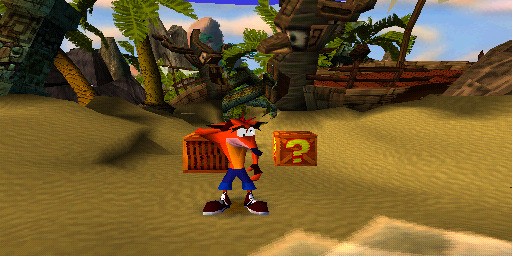
1996 - Crash Bandicoot
Crash Bandicoot is the game that reminds me most of my childhood. I’ll never forget the countless hours I spent playing it in front of the TV. Funnily enough, it wasn’t until recently that I actually replayed it with a cousin and beat it for the first time. I’m really excited to play the remastered trilogy when it releases later this year.
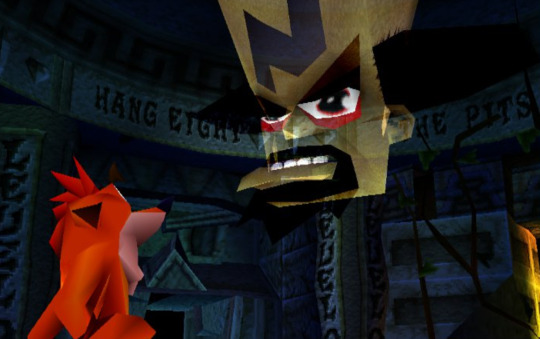
1997 - Crash Bandicoot 2
Crash Bandicoot 2 was a step up from the original game in almost every way. I remember the day I saw it on display in the store. Back in those days it was hard to keep up to date on all of the latest releases without the internet, so it completely caught me off guard. I didn’t even know the sequel existed until I saw it in the store. I’ve still not beaten it to this day, partially because I didn’t have a memory card at the time and couldn’t save my progress. I got close a few times though.
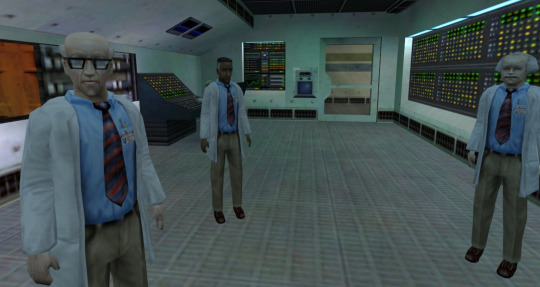
1998 - Half-Life
This is one of the games on my list that I didn’t play the year it came out. For me, this was the game I played during my first year of college after moving away from home. It’s easily one of the best shooters I’ve ever played and I can’t wait to play it again.

1999 - Spyro 2: Gateway to Glimmer
I remember playing this game at a relative's house for the first time. It’s a fantastic platformer that’s still fun to go back and play today. If you’ve never played a Spyro game, this is definitely the place to start.

2000 - Wario Land 3
Wario Land 3 isn’t just one of my most nostalgic games of all time. I honestly think it’s the most underappreciated game ever made. I rarely meet people who have played it and those who have can only say positive things about it. It’s easily got to be the best game that was available on GameBoy Color.

2001 - Metal Gear Solid 2
Metal Gear Solid 2 changed up so much from the original game. If you were invested in games culture back in the day, you’ve probably heard that this was incredibly way ahead of its time. Everything from the gameplay to the social and political commentary that this game provided was unlike anything people had ever seen before in a game. It wasn’t afraid to step outside the box and it very much deserves its place on this list.
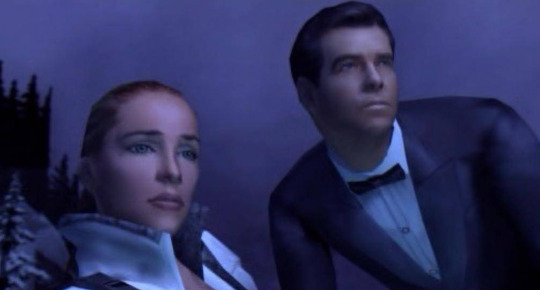
2002 - James Bond 007: Nightfire
Nightfire wasn’t just a great Bond game, it was arguably the best multiplayer game on the PlayStation 2. I’ve spent hundreds upon hundreds of hours playing the multiplayer mode in this game with friends and bots. It also packed a pretty good story mode - but the big reason it’s made the list is the incredible multiplayer.
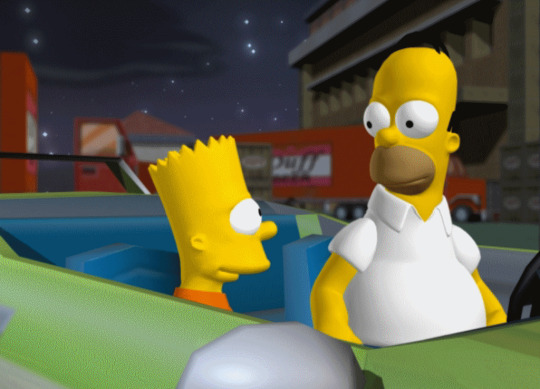
2003 - The Simpsons: Hit & Run
As a child, I was definitely never allowed play Grand Theft Auto games. The closest I ever got to an open world crime game was Hit & Run, which also had the benefit of being a great Simpsons game.

2004 - Metal Gear Solid 3
Damn, Hideo Kojima knocked it out of the park with this game. I played Metal Gear Solid 3 for the first time last year and it’s easily one of the best action games I’ve ever played. Not only does it have a thrilling story set during the Cold War, but its gameplay is beyond anything I could have ever expected to see on the PlayStation 2. The ending even made me shed a tear.

2005 - Resident Evil 4
Resident Evil 4 is one of my favourite horror games. Its world is so engaging and its gameplay is unbelievably tense. If you know anything about this game, you probably know that its controls are very clunky - but the game uses them to its advantage to make encounters with enemies more terrifying. I’m not a fan of some of the boss fights but the game totally makes up for it with its gameplay, level design and upgrade systems.

2006 - New Super Mario Bros
Although I never owned a Nintendo DS, I got the chance to play this game years later on my brother’s system. I fell in love with this game instantly - it’s graphics may be extremely ugly by today’s standards, but the gameplay and level design are near-flawless.

2007 - Call of Duty 4: Modern Warfare
This was my first modern-FPS game and the story experience completely blew me away. Modern Warfare’s campaign has moments that are totally unforgettable. Even though the story is short, it packs in a variety of set pieces that combine great gameplay with huge cinematic moments.
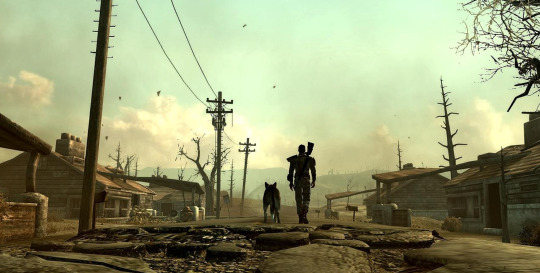
2008 - Fallout 3
When I first played Fallout 3, I had absolutely no idea what I was getting into. The game spends the first hour telling a contained story inside a Vault - in which the people living there have never seen the outside world. I still remember the moment I left the Vault for the first time - it was so unexpected and it completely blew my mind.

2009 - Uncharted 2: Among Thieves
The first Uncharted was a game-changer, and the first game I had ever played with cutscenes edited and pieced together so flawlessly like a film. When Uncharted 2 came out, it blew the first game out of the water. It upped the stakes, the set pieces, the character development and everything else in such an unexpected way that it became an instant favourite of mine. Plus, the entire train sequence was way beyond its time - literally unlike anything I had ever seen in a game before.

2010 - Heavy Rain
Heavy Rain was my first choice and consequence game. I was fascinated by the idea of making decisions that could completely change the course of the game. Admittedly, when replaying this game years later it really shows its age - but at the time it was such a fresh idea for a game that all of its problems didn’t seem significant at all.
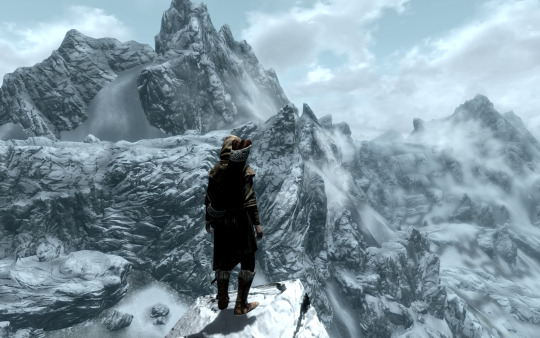
2011 - The Elder Scrolls V: Skyrim
Skyrim was my first Elder Scrolls game, and it won’t be my last. It took a lot of the elements that I adored from Fallout and painted them all over a ‘Lord of the Rings’-esque world. I spent countless hours in this game and have replayed large portions, and I still discover something new each time.
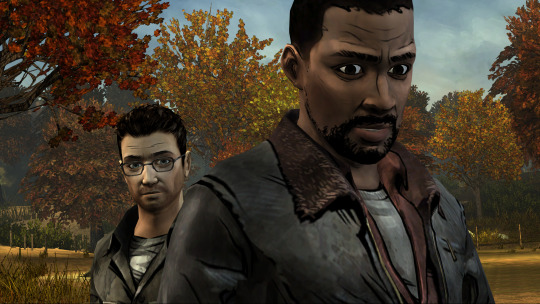
2012 - The Walking Dead
Telltale’s The Walking Dead wasn’t my first Telltale game (that would be The Wolf Among Us), but it’s definitely my most memorable. It’s another choice and consequence game, but it’s divided into five ‘episodes’ which last around two to three hours each. The story is so engaging, and the characters are all very interesting - but what stood out the most was the tension. No character felt invincible, and in some cases you have to make major decisions within seconds that would probably take hours to fully contemplate. Plus, the impacts of your decisions carry over to the sequel.

2013 - The Last of Us
The Last of Us is, without a single doubt in my mind, my favourite game of all time. I have far too much to say about the game to condense to a few sentences - but it has the most tense gameplay and best story I have ever experienced in a game. I still remember heading out on my 18th birthday to buy it, and coming home to play it with friends and cousins who were up for my birthday. We all sat there and played through the opening chapter - and were all choked up afterwards. No game has ever made me well up as much as The Last of Us, and no game has ever given me so many goosebumps when shocking things happened.

2014 - The Last of Us: Left Behind
Although 2014 was a pretty quiet year for gaming, my favourite game regardless was the Standalone DLC to my favourite game. Left Behind tells a prologue story to The Last of Us that gives a lot of background context to events referenced in the main game. Because it’s so short, there’s not much to say without spoiling it - but if you’ve played The Last of Us (and you should), then this is definitely worth playing afterwards.

2015 - Metal Gear Solid 5: The Phantom Pain
I had a really tough time picking a favourite from this year (Fallout 4 nearly took the spot), but ultimately, my pick for 2015 has to go to the final Metal Gear game by Hideo Kojima. Not only does The Phantom Pain have the most complex gameplay systems I’ve ever played with, but what really stands out is how it expects the player to be patient, intelligent and creative. I never felt like there were limits to what this game would allow me to do. In every single mission, the game expected me to use intuition to figure out solutions to the problems it presented. After playing The Phantom Pain, I found it difficult to go back to games that held my hand.

2016 - Uncharted 4
The last Uncharted game was one of my most anticipated games of all time - and it did not disappoint. Uncharted 4 pays homage to the original Uncharted trilogy while also raising the bar to a level that was practically unheard of beforehand. It’s story is fantastic, and does a great job at fleshing out the characters in ways that differ from the previous games. The attention to small details is also phenomenal - leaving the player with an experience that is totally immersive.
0 notes
Text
Alumni Spotlight: Lauren Bayne

Lauren Bayne, alumna of the Stan Richards School of Advertising & Public Relations, has quite the resume. From learning her foundational skills at Austin top-shop GSD&M to gaining the courage to launch her own niche-targeting agency, Bayne has tips on all aspects of the advertising industry. I recently chatted with her to learn some more:
Did you always know you wanted to be an advertising major at UT Austin?
“Actually, no. I went to UT to major in Broadcast Journalism and was required to take a Communications class outside of my major. I had never really thought about the advertising industry and didn’t really know what people with an ad career really did, so I thought I’d sign up for “Intro to Advertising” (ADV 318J) just to check that box. Looking back, I’m so thankful this was a requirement because I would have never discovered such a perfect calling for my creativity and strengths. I fell in LOVE with this class and loved Professor Murphy and after about a few weeks, I officially changed my major to Advertising. I was accepted to Texas Creative soon thereafter and got to learn from Deborah Morrison, Patty Alvey and Jack Reed. In 1997, I won the USA Today Collegiate Challenge, a national advertising contest that encourages college students to promote volunteerism at the grassroots level. My print piece ran full-page in USA Today and I got a trip to D.C.! This was a big deal and it helped cement my career choice for sure!”
What was the turning point when you decided you wanted to leave your job and start your own company?
“On September 11, 2001, I was 26 years old and woke up like the rest of us on that tragic day in history and got ready for work. I sat at the edge of my bed staring in horror at what was unfolding in front of me on the TV.
It was the first time in my life that I had ever really felt vulnerable as a human. It was the first time in my adult life that I had ever really thought about my mortality and what my existence here on Earth was all about. And I was in shock.
I arrived to work later that morning and the agency was almost silent. People were trying to do their jobs, but it was hard. And weird. And unsettling.
My creative director walked into my cubicle and we chatted for a little bit about the attacks and what the latest news was, etc. Then he changed the subject and said, “Sooooo…those BBQ table tents are gonna be $11.99 now instead of $13.99 so we’re gonna need to do some value & savings type lines and I need to see your first round EOD, ok?”
I looked at him and mumbled “ok” and he walked out. I stared at the now-empty opening in my cubicle where he was standing and I immediately thought, “Oh my goodness. I’m just selling ribs for a living. Is that what I’m doing with my life? Convincing people to eat more ribs?”
Now this was definitely a jaded, emotional response to what could have been a huge strategic opportunity for me to advertise the importance, now more than ever, to get your friends and family together and enjoy their company over a good meal. But it wasn’t as clear to me then how I could have changed my mindset.
That exchange single-handedly sent me on a new trajectory and I immediately asked if I could switch accounts and work more on brands like Race for The Cure and United Healthcare. Businesses that I felt, at the time, had a higher calling and bigger purpose. At the same time I was noticing in myself a huge entrepreneurial side of me that was growing. I loved learning about the businesses my clients ran and the different challenges they had along the way. I devoured Entrepreneur Magazine and the “Business and Personal Growth” section at Book People. So in 2002, I ended up leaving the agency world for the start-up world and spent the next few years immersed in it.
And then...I became a mom.
Like ADV 318J, I had no idea how motherhood was going to change me. I thought from all of my babysitting and camp counselor experience, I’d be able to raise a kid, raise a business, serve on the PTA, attend baseball games, be a good wife and throw elaborate birthday parties easy peasy!
Boy, was I wrong.
And I struggled for a very long time trying to figure out my maternal and professional identities.
For the next 5 years, I freelanced, I was a Creative Recruiter, and I never stopped thinking about someday owning my own business. Along the way, I also started noticing how my relationship with brands had changed literally overnight since becoming a mom. I noticed how differently both my husband and I shopped and consumed products and services now that we were parents. My new identity had now changed me from the stereotypical demographic, “Woman 25-35” to “Woman & Mom 25-35” and that’s a HUGE distinction when it comes to the purchasing power and preference a woman will make– bigger than I think most brands and agencies really realize.
This “ah-ha moment” incubated for a long time and I did a lot of research and informal focus grouping amongst my creative colleagues and agency mentors to solidify what I believed was a valuable offering for brands.
So in 2015, I launched Offspring– a family-friendly creative content studio that provides insight and multi-media executions for brands who target some of the important demographics in the world: Moms, Dads & Kids.”
Do you have any advice on how to win over clients?
“BE YOURSELF. Clients are buying your creativity, your perspective, your style and your personality. That’s how this industry is even still alive today - it’s all based on the talent that exists inside the walls. I compare the client/agency relationship a lot to a dating relationship. There’s got to be chemistry beyond the contracts…advertising is so subjective and what one “tall, dark and handsome” is to one client, may not be the same for another. So if you stay authentic to who you are and what your personal brand stands for, you’ll attract like-minded clients who will hopefully not want to break up with you for a very long time. I also think more and more clients are looking for nimble, flexible creative partners these days. It’s become easier and easier to crank out an ad over the years, so I think astute brands want more efficiency when it comes to their marketing endeavors. Less meetings, more productivity!”
Your agency recently teamed up with the CARE (Child Abuse Resource & Education) Program at Dell Children's Medical Center to create three PSAs on recognizing abuse and how to stop it. How was working on a PSA different from a traditional advertising campaign?
“Remember the “selling ribs” story from earlier? Well PSAs are the answer to my “how can I use my career to make the world a better place?” question. While I’d like to think I can achieve the same purposeful type work for traditional advertising, a PSA has a higher calling right from the gate, which I personally love. So the first difference is, that you’re selling awareness and ultimately, action for an emotional cause. The second difference would be the budget. PSAs don’t usually have big production budgets, so you have to team up with people who are willing to cut their rates because the cause is so important. I was so blessed to have Jason Uson and his team at Foundation Editorial along with Art Director, Robert Lin (fellow UT grad) jump on board and help me deliver three amazing spots on a budget that was 10 times less than what a normal production would warrant. I believe that doing great work with great people even when the money might not be that great will be rewarded one day. The third difference could be the media buy. Every PSA is different, but there isn’t usually a huge media budget either, so the creative needs to be really impactful so it can be shared and viewed organically. I’m really proud of the work we created for the CARE program at Dell Children’s and I think it’s an important message that can impact everyone.”
How do you manage balancing time with your family and running your own business?
“I don’t! No one really does, honestly. This is one thing I’d love to make sure the next generation of ad grads knows early. Don’t go chasing a balanced life.
Chase a fulfilling life. Chase an interesting life. Chase mistakes and the lessons from them. Chase a life full of experiences and people who might leave you un-balanced and be okay with that.
It will fuel your creativity.
It’s taken me the last 20 years of my life to realize that it’s not really balance we want, it’s stability. I want to make sure those who come behind me know that there will never be a balance. Balance is boring anyway…that’s for the Business School folks, not us Communication folks! I will say though, because I have such a huge awareness of the fleeting passage of time, my business “suffers” from growing faster than it could because I put my family first. My days pretty much end at 3 p.m. and pick back up at 9 p.m. because it’s important to me that I be there after school for my sons. But that is just me. You won’t know until you become a parent what your definition of “balance” will be; we ALL do it differently and there is no one right way of doing it. But this has been a sacrifice, both to my agency growth and to my family’s bottom line. But I’m ok with that for now because I’m a big believer in timing and surrendering to how the universe wants my story to unfold. And so far, I’ve been loving every chapter.”
Do you have any advice for students about to graduate and enter the advertising industry?
“1. Get an internship sooner than later!
I know I mentioned this before, but being able to see how the industry really operates outside of the classroom is HUGE.
2. Research what kinds of agencies match up with you as a person.
Do you think you’d do better at a smaller, privately owned shop where you wear more hats like Boone Oakley? Or do you like the idea of being at a large publicly owned shop with more resources and man-power like GSD&M? There are pros and cons to both and I think if you can figure out what size and type of shop suits you best, you’ll start your career off on the right foot.
3. Make sure you have thick skin and don’t be defensive.
This is a brutal, competitive industry on many levels, so you have to be able to separate your feelings from the critique because you will get A LOT of it. Stay humble as much as possible and eager to learn and re-calibrate your efforts.
4. Really think about your personal brand.
You just spent the last 4+ years learning about how to brand others, make sure and do it for yourself! Think about why people buy certain products and services and apply that to yourself and your work, so you too will be profitable. If you can make yourself a valuable agency and client asset, you will have a very successful career in this business.
5. Location, location, location.
Go to the big cities now! Unless you have personal reasons for why you have to work in certain geographical locations of course. Cut your teeth on multiple shops in the beginning. Like every 2-3 years. I know there are contradictions to this, but from my point of view, some of the most successful advertising professionals had to move around a lot to get there and if you can start in the big cities first, you’re one step ahead.”
We are so proud to have Lauren in our TAPR alumni network! Learn more about her experience and agency by visiting Offspring’s website and social platforms!
By: Sara Scarlett
#alumni spotlight#tapr alumni#tapr#stan richards school of advertising and pr#university of texas at austin#tapr alumna
0 notes